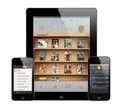The Five-Year Plan for Mobile Technology
If you go back just five years and think about mobile technology, it’s a little frightening just how far the industry has come. Back then, most popular mobile devices were flip-based phones with crude color screens, a horrible mobile web experience and little to do other than make phone calls and deal with the occasional email (no attachments, of course). Nowadays, smartphones are almost ubiquitous with cell phones, and the most popular design features one large, amazing-looking screen. In addition, applications are often more important than the actual phone features.
Looking five years into the future, will the changes in mobile technology be as striking and significant as the changes over the last five years? The answer, as it usually is for these types of questions, is both yes and no. There are a number of interesting innovations and materials coming out that will change how smartphones are used, but the basics of mobile technology don’t appear to be on the precipice of a major shift in the mobile world.
Near Field Communication
Near Field Communication represents the largest change coming to mobile devices over the next few years, almost to the point where it can be called a revolution in the industry. NFC is simply a short-range connection protocol, much like Bluetooth, that allows a smartphone to exchange small amounts of information with a nearby receiver. An NFC connection takes just a fraction of a second to establish and requires minimal effort on the part of the smartphone owner, making NFC the ideal choice for mobile payments.
The NFC revolution is already underway, as Google Wallet and Sprint recently rolled out to the public, and as time goes on more and more smartphones will come with the ability to use NFC for payments. Just as credit cards have replaced cash as the preferred method of payment, so too will NFC replace credit cards in the next few years.
Once NFC gains massive popularity due to the ability to quickly pay for goods and services, expect the technology to bleed over into marketing as well. Once NFC transmitters become cheap enough, most forms of physical advertising will have a spot where people can tap their mobile phones to download web links, small promo apps and whatever else the ad company wants them to have. Within just a few years, NFC will dominate the mobile industry and become one of the main uses for smartphones.
New Materials and Designs
No aspect of the future of mobile devices brings out as much wild speculation, even to the point of outright silliness, as the potential materials and designs for the next generation of smartphones. From flexible, translucent screens to holographic displays to devices made out of wood, if you can dream it, someone’s made a mobile device prototype out of it. In this excellent article on future cell phones, Sandy Samra takes a look at some of the various designs that are floating around.
Not every idea is a winner, or even physically possible, but there are a few concepts floating around out there that may come into play in the next few years. There is a good amount of buzz around the idea of a cell phone having a pull-out, flexible screen, or even having the entire device made out of the flexible material. Several companies have already developed this technology, so once components come down in cost, expect to see these on the market. The only big question marks surrounding these devices will be durability and functionality, which will both have to be superior if the masses are going to adopt this kind of device.
Most other new designs are a little bit out there, although there has been some research into the ability to control a mobile phone by mind control. While this may sound like science fiction, the results have been promising, although it is a long way from being ready for prime-time. While this technology may be more than five years out, eventually it could change everything about the devices, from their interface to design.
Location-Based Services
There has been a significant amount of uproar this year as people found out that their phones were tracking their location. While this has caused some consternation in the public, mobile devices will only become more location-dependent in the future, and while companies may be more up-front about tracking the device’s location, consumers won’t have a choice in the matter if they want to get everything they can out of the device.
Right now, most device interactions require that the user use the device to search for something. In the near future, however, that relationship will change as the device will reach out to users explaining what interesting things are in the area. A quick trip through a city will bring up public parties, store sales, nearby friends, restaurant reviews and even historical facts, giving smartphone users more options on how to spend their money and time. The implementation of location-based services will be the first wave in fully integrating people with their devices.
Universal Device Controller
With everything that smartphones can currently do, they still often have issues interfacing with the rest of the devices that people use every day. Expect this difficulty to vanish as more and more devices come equipped with wireless technology, and the various technologies out there get whittled down into just one or two. Eventually, televisions, audio devices, game consoles, stereo systems, computers, car computers and even appliances will all interface with, and be controlled by, smartphones. This change may occur sooner for devices that have the ability to connect to the Internet, such as PCs or car computers, but it won’t be too long until smartphones can control just about every electronic device out there.
Interface Changes?

Over the next five years, quite a few things about mobile technology will change, but interfaces may not be one of them. The current smartphone interface has been generally unchanged since the iPhone’s release, and as long as people continue to need to select applications from a list, there really isn’t a better way to do things. Now, if devices eventually get the ability to be controlled by mental commands, all bets are off. Until that time, or until some other method of smartphone input comes on the scene, expect all mobile devices to have some variation of the current smartphone/tablet interfaces.
References
-
Business Insider, http://www.businessinsider.com/future-of-mobile-experts-2011-6#
-
NFC emblem from Wikipedia
iOS images from Apple Press Info
-
App Storm, http://iphone.appstorm.net/general/hardware-news/what-is-nfc-and-why-should-i-care/
-
The Futurist, http://thefuturist.co/the-future-of-mobile-cell-phones
-
The Week, http://theweek.com/article/index/214263/the-future-of-cellphones-dialing-with-your-thoughts
